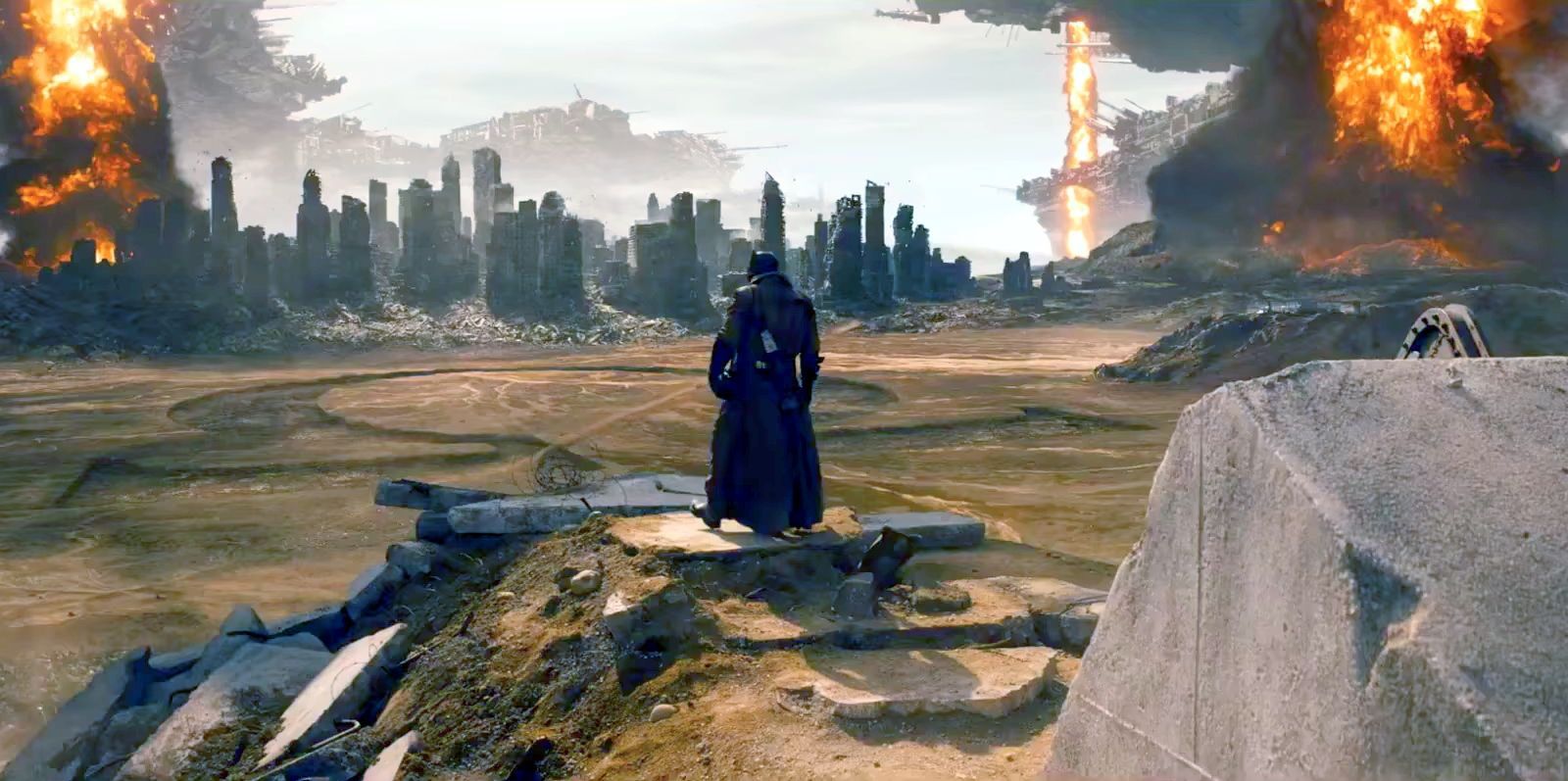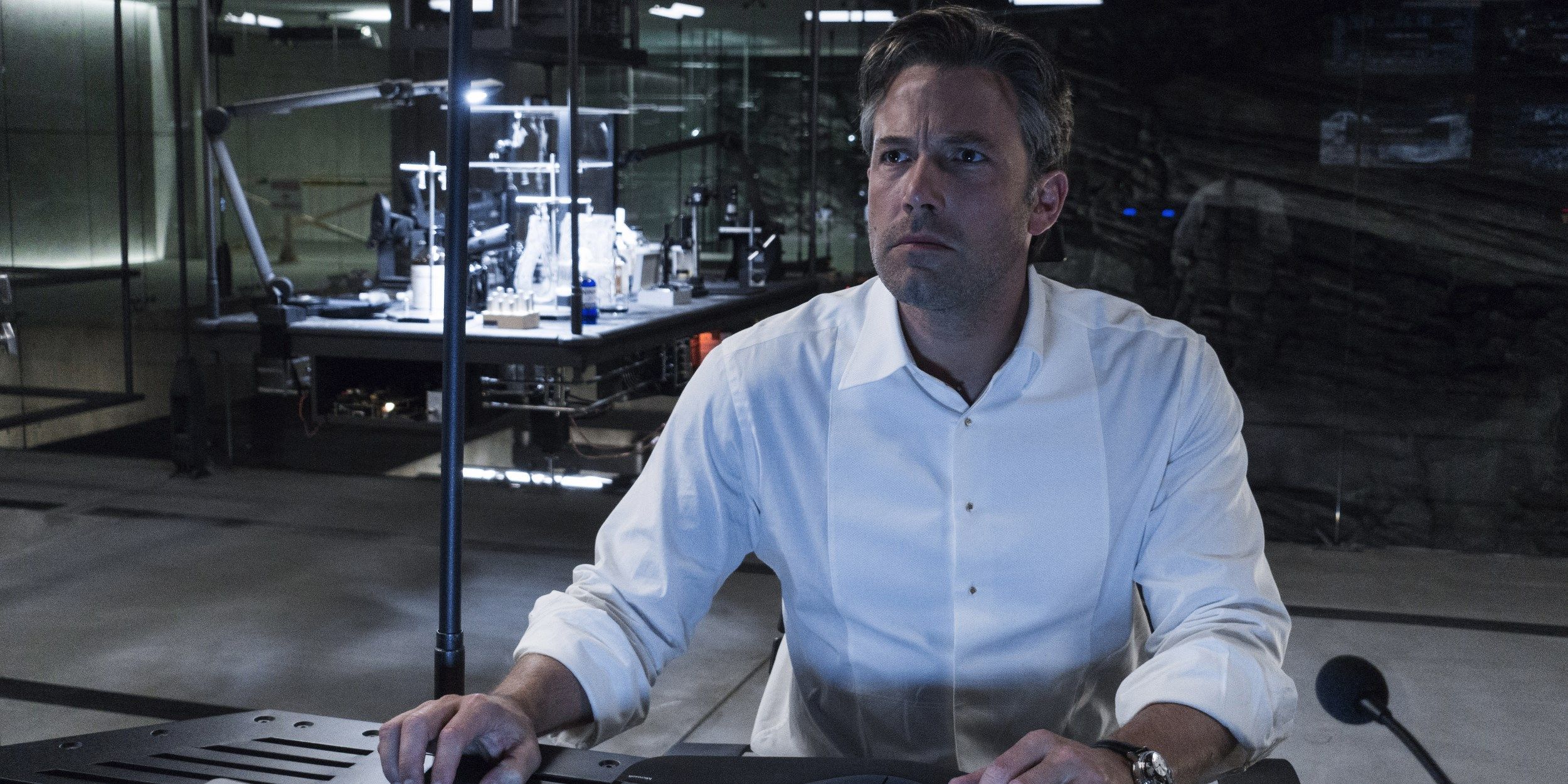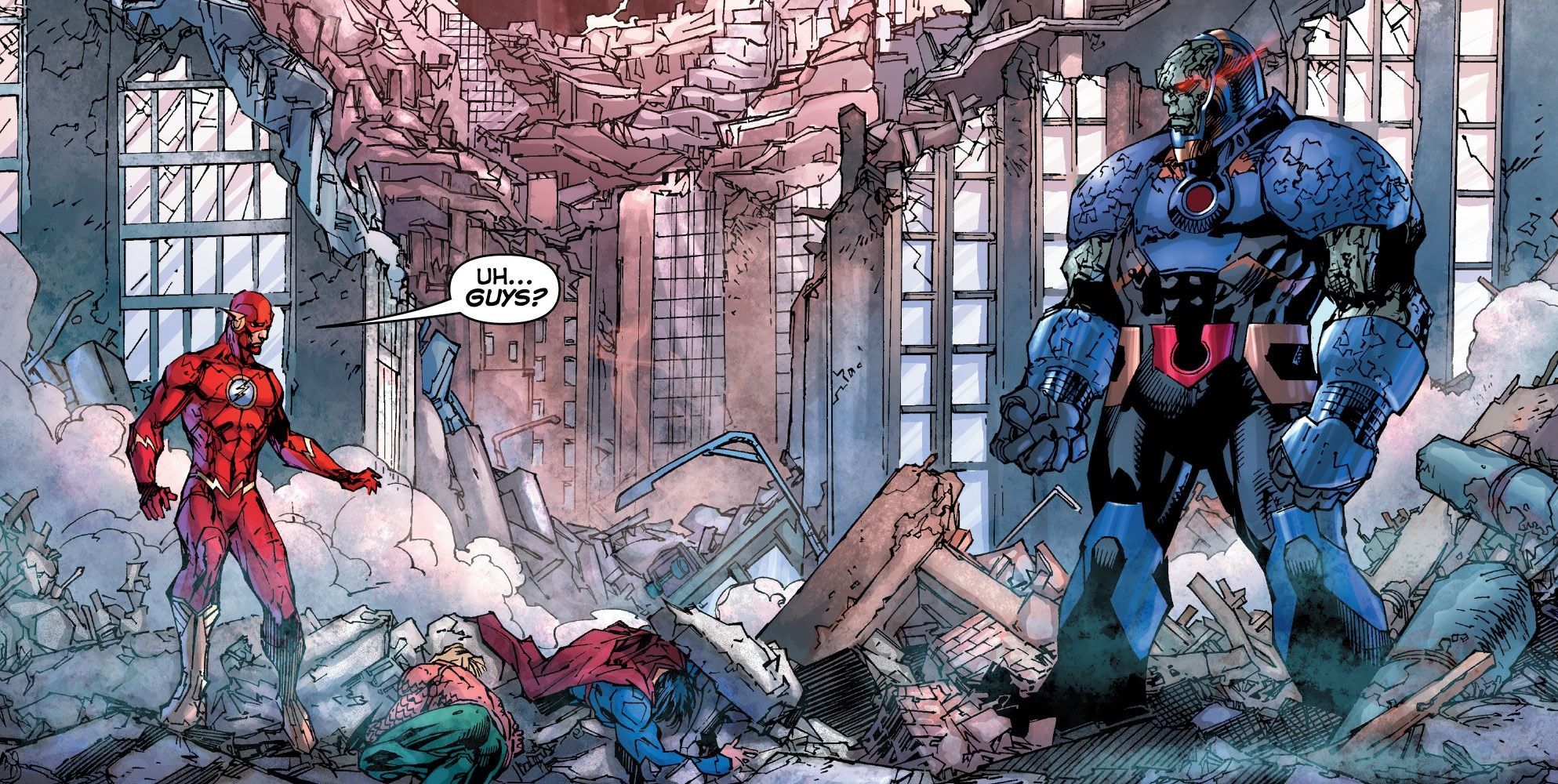[WARNING: This article contains SPOILERS for Batman V Superman.]
-
As the marketing for Batman V Superman: Dawn of Justice began to ramp up, few images caught the eye (and curiosity) of comic fans like Ben Affleck's Batman, goggled, coated, and battling armed soldiers in a post-apocalyptic desert. As the weeks and months passed, fans were given enough to deduce that the sequence in question - dubbed the Knightmare - was nothing but a dream - a terrifying 'worst case scenario' that Bruce Wayne envisioned, should his fears of Superman prove accurate. But then, that wasn't the whole story.
After all, the massive Omega symbol scorched into the Earth, the red-eyed, winged footsoldiers torn from the pages of DC Comics all seemed to tease the next supervillian in store for Justice League. So, was Bruce Wayne's dream built from images eerily familiar to DC Comics readers? Or was director Zack Snyder up to something more sinister? One member of the film's production has come forward to confirm our suspicions that, more than anything, the Knightmare seems certain to be a sign of dark days ahead.
As we've discussed in multiple articles since the first images of the Knightmare sequence were released, the Omega symbol and Parademon soldiers are all signs of Darkseid, the classic Justice League villain from the planet Apokolips. But what wasn't revealed ahead of release was the biggest twist of the Knightmare sequence: the arrival of The Flash (Ezra Miller) that immediately followed it, bursting into the Batcave through a rupture in time.
Flash's arrival and cryptic warning had us convinced this was more than just an Easter Egg-filled dream. For starters, the warning fits Snyder's tease that something bigger really is coming, the depiction of Apokoliptian tech and soldiers is a little too accurate to be coincidence, and then there's the very real papers scattered by the so-called dream.
Producer Deborah Snyder explained how the Flash cameo was written as a hint at things to come, but it doesn't explain how Affleck's Batman is suddenly seeing premonitions of what's to come. Now, storyboard artist Jay Oliva has offered his own interpretation of the scene, which should make perfect sense to those already steeped in DC Comics lore - and surprise those who missed the real plot twist being delivered.
Normally a storyboard artist's interpretation wouldn't be given a colossal amount of weight, but Oliva is no stranger to DC fans, having done the same work for Man of Steel, The Flash TV series, the upcoming Wonder Woman film, as well as directing the animated DC features Batman: The Dark Knight Returns, Batman: Assault on Arkham, Justice League: War, Justice League: The Flashpoint Paradox and countless others.
And after working on the Knightmare sequence with director Zack Snyder, Oliva offered up his own explanation on the Hall of Justice Podcast as to what the 'dream sequence' really means:
"You want to know the answer? Okay... you've watched The Flashpoint Paradox, my movie, right? In the DC Universe in the comics, there's this thing where-- it's a little different than the Back to The Future thing where you can go back in time and change your threads and stuff, but in DC, when you go back in time you create this kind of 'Time Boom' kind of thing where lots of things change.
"Okay, so let me just tell you this. Again... I don't know if this is Zack's thinking, but this is mine: what if that isn't a dream sequence? What if what you saw was a Time Boom, a latent memory from the future when Flash comes back? If you look at the cut, he doesn't go to sleep! He's waiting for the [Lexcorp file decryption] and suddenly this [Knightmare sequence] comes in, and he's jogged out of it seeing his own death. And what does he see? He sees Flash. And if you're a DC fan, you know what's happening. You know that Flash going back in time, that memory is now coming back to him... mind you, it's jumbled."
It doesn't come as a total surprise that our own conclusions fall in line with Oliva's (The Flashpoint Paradox was one story we pointed to as an explanation of the vision coinciding with Barry Allen's arrival), but he states plainly some of the more complicated aspects of the question. His description is accurate, too: audience members never see Bruce Wayne fall asleep. Upon loading the encrypted files returned by Wonder Woman, Bruce begins to gaze a little too intently at a progress bar - almost as if his mind is beginning to drift elsewhere - before the screen suddenly cuts to black, and the full Knightmare begins.
Most audience members will not only fail to get the references to Darkseid and Apokolips, let alone the identity of Ezra Miller's out of focus, violent appearance or cryptic warning. Least of all, the fact that the vision comes to a wide awake Bruce, and ends with him face down on his desk, startled awake at Flash's sudden interruption (and the fluttering papers defying the implied explanation that it was all in Bruce's head).
But weighing the sequence on its own, there's clearly too much going on here to be thrown in for no reason. How could Bruce Wayne just 'dream up' the landscape of an alien world, the markings of an alien conqueror, or even a tyrannical Superman out for his life, seeing Batman as the man who "took her from me." We don't know the woman being referred to, but Snyder clearly has an idea. They all make sense if offered as a dark view of a possible future, but presented as merely a dream sequence causes all kinds of plot holes to be torn open.
As a frequent writer and interpreter of the existing DC Comics mythology, Oliva believes that ambiguity (again, in his opinion, viewing Snyder's imagery and storytelling through a similar lens as a DC creator), was completely intentional:
"The thing is that, it's meant to be so kind of subtle, most audiences just think of it as a dream. And it's meant to be that way. It's just like in the comics when there might be some shadowy figure standing in the background, you don't know who that character is until five issues down the line. The main purpose of that in the film - because people will probably say 'why even have it, if it's not going to be followed through?' - I'm going to say: 'Well, it's there because it actually adds to... Bruce Wayne's kind of mania. Because he sees this memory. He doesn't quite know exactly what he saw, all it does is tell him is that Superman is bad.
"And remember, when Flash goes back in time, he tells him 'you were right about him.' He doesn't say exactly who 'him' is. The average audience member, and even Bruce Wayne, is going to think that he's right about Superman, when in fact he's referring to someone else."
Oliva's thoughts are going to make perfect sense to DC Comics fans, and likely excite them for not only what's coming, but how Zack Snyder is planting hints and seeds already - but that won't win over those who felt the movie catered too closely to fans at the cost of a self-contained narrative.
It's a fair concern going forward, but Snyder has never made his loyalty to fans a secret, even if it's sure to garner criticism by drawing on other stories, movies and comics too heavily.
Oliva doesn't defend the director from that side of the conversation, but implies that complaints of the sequence "not making sense" or not belonging in the movie are out of line. He stops short of predicting who that character being teased has to be - leaving Darkseid or one of his colleagues as the most likely fan-suggested answer - leaving Zack Snyder to decide what's being hinted at, and how these scenes will be worked into those films yet to be made.
But Oliva reminds all that these kind of conclusions aren't reaching, or trying to make sense of a nonsensical story: after all, time travel as presented in Batman V Superman is as important to the core DC Universe as the heroes themselves:
"I work with these characters constantly. Hell, I did The Flashpoint Paradox! So I know the whole time thing, and what DC is all about. It's like 'Days of Future Past' for X-Men, you know that the time travel thing is a part of X-Men. Star Trek does that with the reboot. But for some reason, as soon as you do it in a DC film, people suddenly just forgot! Superman turning back time in the Donner films is suddenly okay, and I'm like, 'Okay THAT doesn't make sense!'"
If our own interpretation of the scene, as well as Oliva's, proves to be Snyder's intent, then fans of The Flash won't have to wait for the hero's solo movie to see him shape the DCEU as a whole. But they will be waiting for the moment in his film, or the Justice League team-up when Barry Allen takes a trip back in time to deliver the message. It could prove a thrilling moment, but the question must be asked... how bad will things get before he realizes it's the world's only hope? For the answer, we'll all have to wait and see.
NEXT: Batman V Superman Deleted Scene Explained; Teases Justice League Villain
Batman V Superman: Dawn of Justice is now playing in U.S. theaters. Suicide Squad will arrive on August 5, 2016, followed by Wonder Woman on June 23, 2017; Justice League Part One on November 17, 2017; The Flash on March 16, 2018; Aquaman on July 27, 2018; Shazam on April 5, 2019; Justice League Part Two on June 14, 2019; Cyborg on April 3, 2020; and Green Lantern Corps. on June 19, 2020.
Source: Hall of Justice Podcast



